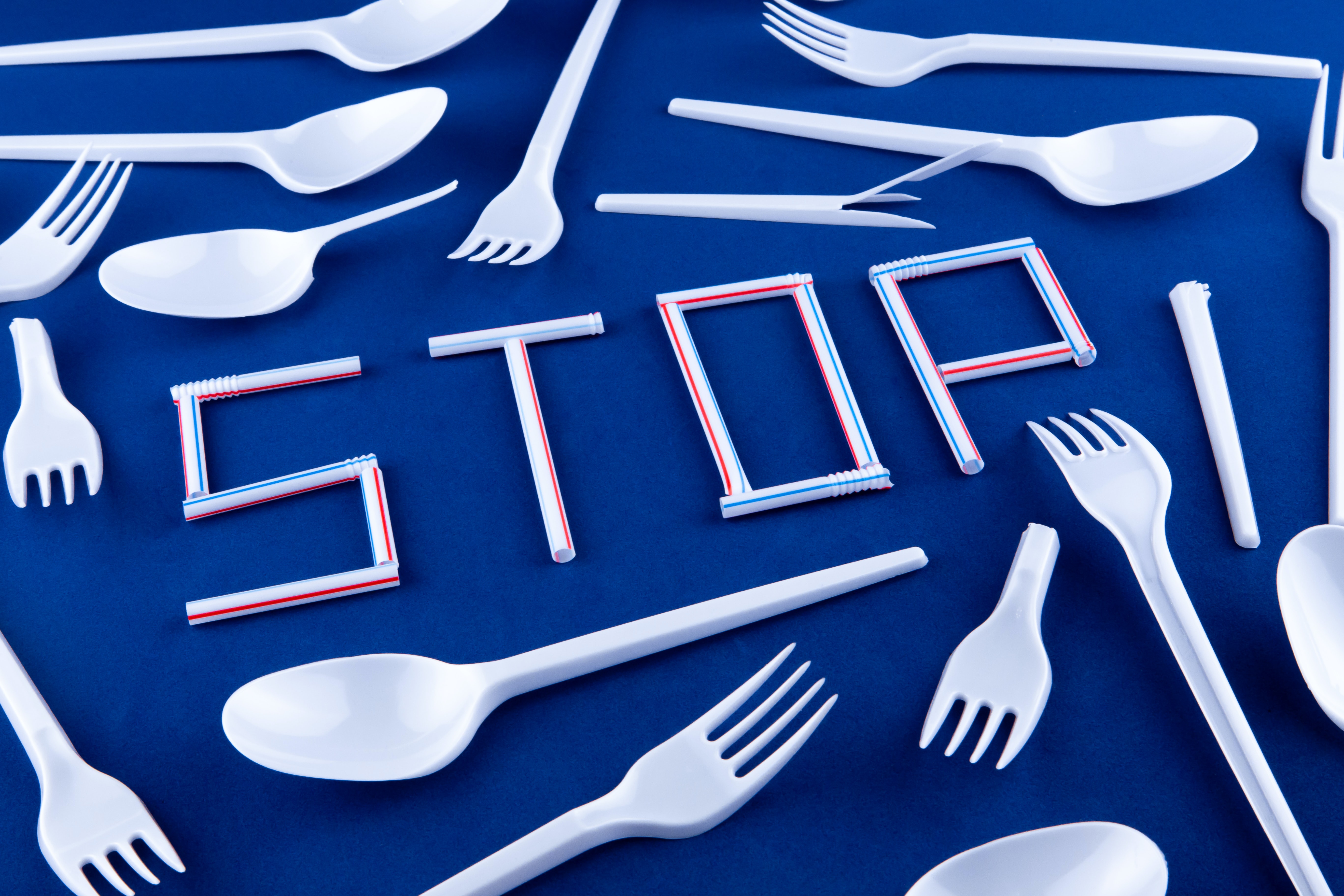How to Avoid Single-Use Plastic
Published: February 8, 2023 Updated: October 1, 2024

Single-use plastics have been the saving grace during times of disaster, power outages, and any other time something unexpected happens. These products even make it easier during a planned event like birthday parties when all you have to do for cleanup is put everything into a bag and throw it away. With cheap pricing and minimal effort, items with single-use capabilities simply make life less complicated. Or does it??
In the moment, we’re happy not to worry about what happens to the plastic after we’re done using it – in fact we’re happy the plastic holds up long enough to get through a soda without carboard residue melting in our mouths – sorry paper straws, there has to be another way…
The convenience and luxury of plastic is engrained in our daily habits – what’s not is an awareness of the effects our habits have on the planet. People are oddly selfish creatures, right? So once a purpose is served, we often forget about any other implication caused by our actions. However, when you take this mindset and combine it with the use of single-use plastic, we end up causing more harm to ourselves and everything else that needs a clean functioning environment.
So, what’s the deal with Single-Use Plastic?
Simply put – the deal isn’t a good one. We understand that single-use plastics serve a need as they’re commonly used for packaging and serviceware, such as bottles, wrappers, straws, and bags. They are created to be disposed of right after use. On the surface this sounds amazing – we get what we need and BOOM, we’re out of there. But we have to consider what happens next…
The bad end of the deal are the long-term impacts caused by short-sighted actions. Actions worth avoiding whenever we can.
Our reliance on these plastics results in waste accumulating at a staggering rate and, unfortunately, with the disposability of single-use plastics it easily becomes litter which can be washed into rivers or blown away. Single-use plastics can be linked to an unbalanced economy, but they are also indicative of the issues of a throwaway culture. We can see evidence of how we prioritize convenience over durability and consideration of long-term impacts if you look at the ten rivers that carry 93% of the world’s total amount of plastics to our oceans.
Avoiding Single-Use Plastics
While we try to re-focus our habits to include more care and thought for the environment where possible, companies are changing the way they create and design bottles. But individual actions still add up. This means that consumers who can make a difference, must begin to purchase items that are reusable or that can be recycled.
Actions like:
- Bringing a reusable bag with us when shopping
- Cooking more often, to reduce the use of takeout containers
- Buying in bulk for items like plastic wrapped snacks
- Avoiding plastic wraps, straws, or utensils
decreases our negative impact on the environment and quite frankly, can save us money. Sure, reusable items, or more durable packaging, may cost more upfront, but being able to use and re-use them beats the extra $3 spent for a stack of plasticware that will cause damage to our planet (if you’re able to make this kind of choice).
As we already know, the more any product is reused, the lower its environmental impact can be. Instead of immediately throwing an item away, durable plastic packaging can be reused or repurposed. It’s also important to note that single-use alternatives made of other materials are not necessarily better than plastic, they may just have an impact that is not so visible. Adding additional consideration to these aspects therefore creates a more thoughtful purchasing experience.
For those without the pressure to meet immediate needs, one thing to remember is if items are not designed to be reused or recycled, they may not be worth buying. We want to support production methods that are in line with sustainability. A key to this is purchasing items which have been produced in a way that considers the environmental impact of those items over their entire life cycle, especially the end-of-life. This will influence whether they are recycled or thrown out responsibly.
By shifting to reusable and recyclable options, we begin to lower our dependence on single-use items while having a positive long-term impact.
